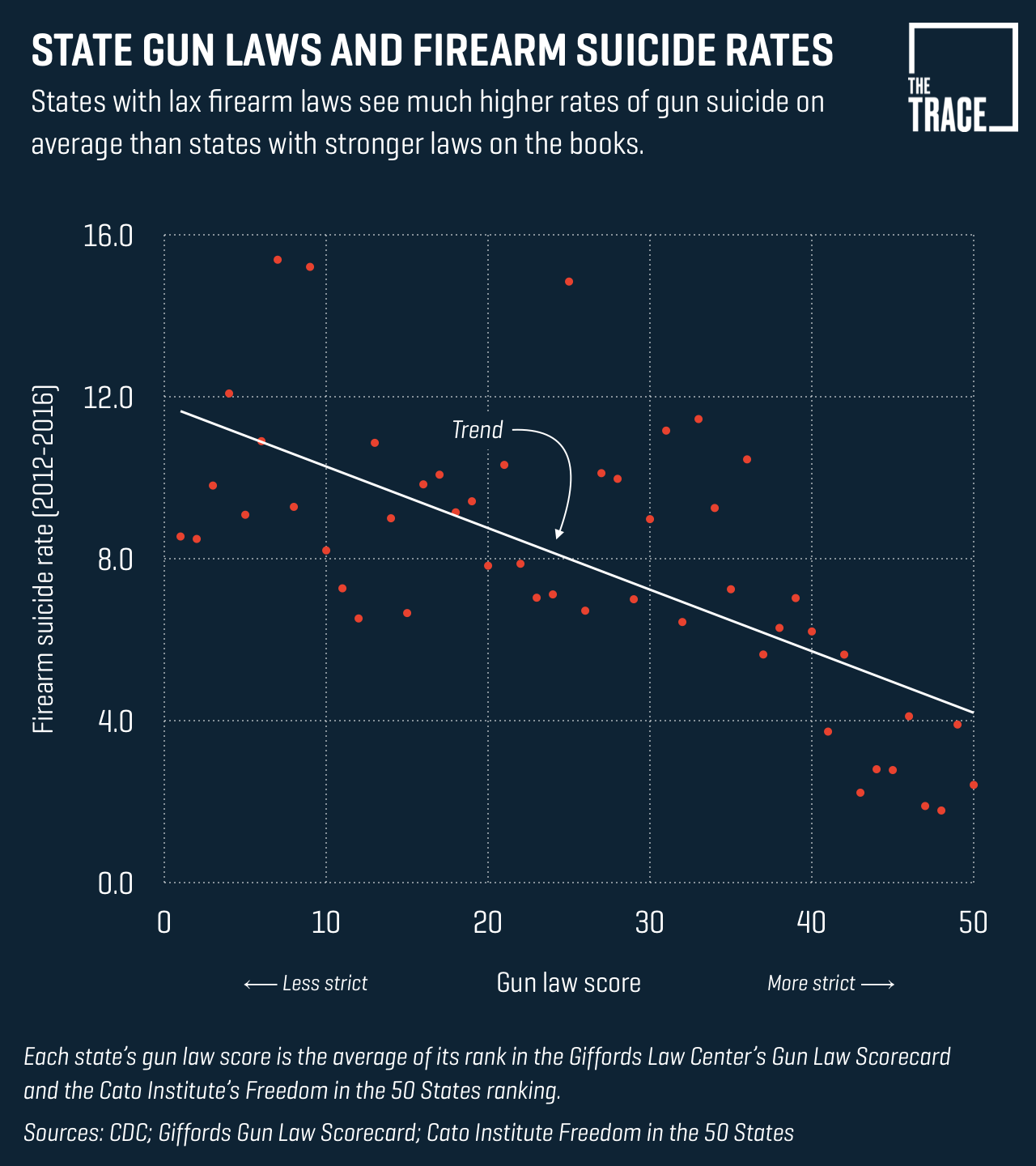Over the past few weeks, The Trace has been answering your questions about guns in America. So far, our journalists have tackled queries on assault weapons and the efficacy of laws targeting domestic abusers.
Today, we’ll explore a two-part question submitted by reader Carl Axness: Which states have the highest rate of gun violence per capita, and how do they rate in terms of gun control with the rest of the country?
The answer to the first part of this question is straightforward. The Centers for Disease Control and Prevention tracks gun deaths (homicides, suicides, and accidental shootings) in all 50 states. Unlike the agency’s estimates of firearm injuries, its count of fatalities are derived from death certificates and therefore generally reliable. Here’s a list of the top 10 states ranked by their rate of gun deaths per 100,000 residents in 2016, according to the CDC:

For context, the national rate of gun deaths in 2016 was 11.8.
Our reader also wants to know how these states rank in terms of gun laws — and presumably if there’s a relationship between rates of violence and regulation. The answer to this second half of the question is more complicated.
For starters, it’s important to understand that there’s not a widely accepted way to “rank” the stringency of gun laws. Several advocacy groups and think tanks — on all sides of the issue — have created their own scorecards, but they each look at different sets of laws and regulations, and weigh those measures differently. Keep in mind that when we reference academic studies in this article, it’s likely that each relied on a different system to evaluate a state’s gun laws.
It’s also important to look separately at gun suicides and gun homicides. Suicides account for more than 60 percent of all gun deaths, and a policy that has a strong effect on this single category of gun fatality may skew the entire analysis.
When Americans talk about “gun violence,” they tend to focus on homicides, so we’ll begin there. Do gun laws impact rates of gun homicide? The evidence is mixed — and researchers are divided on which types of policies are the most effective. While we don’t have enough data to state that “strong” or “weak” gun laws in the broadest sense impact gun homicides, we do know that certain policies in certain places are tied to changes in the rate.
Stand Your Ground policies — which establish a right for an individual to use deadly force in self defense — are one where a strong correlation is apparent. A 2017 study found that firearm homicides increased 32 percent in Florida following the passage of its 2005 Stand Your Ground law.
For more reading on laws that have been linked to increases and decreases in gun homicides, we recommend engaging with the body of research published by the RAND Corporation earlier this year. Among the policies that RAND’s researchers identified as having a measurable effect, one way or another, on firearm homicides: Background checks and concealed carry laws.
Moving on to suicide, the relationship between the strength of a state’s laws and its rate of deaths is much clearer. We threw together a scatterplot of firearm suicide rates and the strength of states’ gun laws below. In an effort to find a “fair” ranking of state gun laws, we averaged scores compiled by the libertarian Cato Institute and Giffords, the gun violence prevention organization. (Credit to FiveThirtyEight for developing this approach in an analysis published last year.)

This chart is back-of-the-napkin math, not a peer-reviewed meta-analysis. But it does suggest a strong trend, and is backed up by additional research. Examinations of specific gun laws and their effect on suicide rates have reached similar conclusions.
As we’ve written before, the policies that have the greatest impact on suicide rates are focused on regulating easy access to firearms. That’s because suicide is so often an impulsive act. One study, published in 2015, examined the effect of so-called permit-to-purchase laws, which require gun owners to obtain a permit before owning a handgun, a process that requires a background check and often an in-person interview and training. The researchers found that after Connecticut passed a permit-to-purchase law in 1995, its suicide rate dropped 15.4 percent. After Missouri repealed its permit-to-purchase law in 2007, firearm suicide rose by 16.1 percent.
The findings are particularly relevant today. While the national homicide rate is down significantly since the mid-’90s, the suicide rate has increased more than 25 percent. The most frequently used method of suicide: guns.


